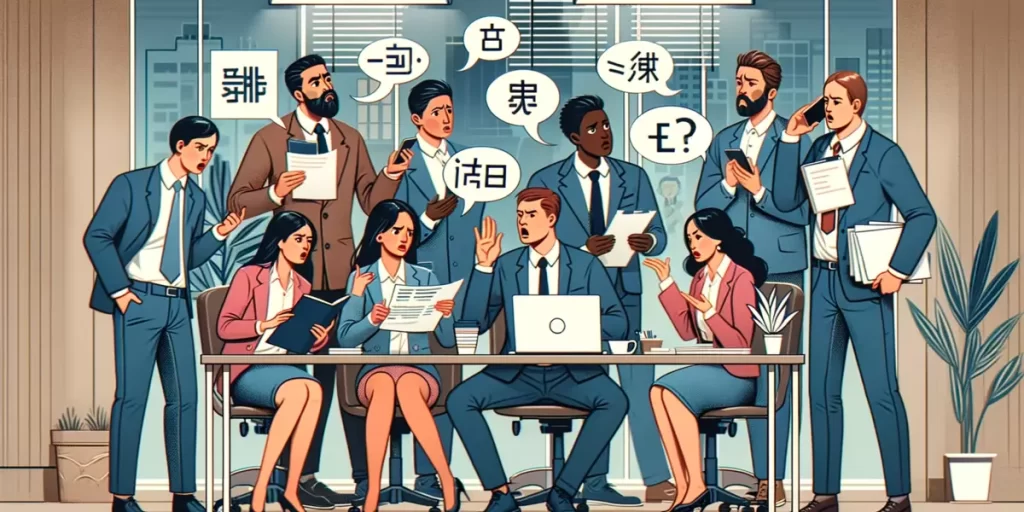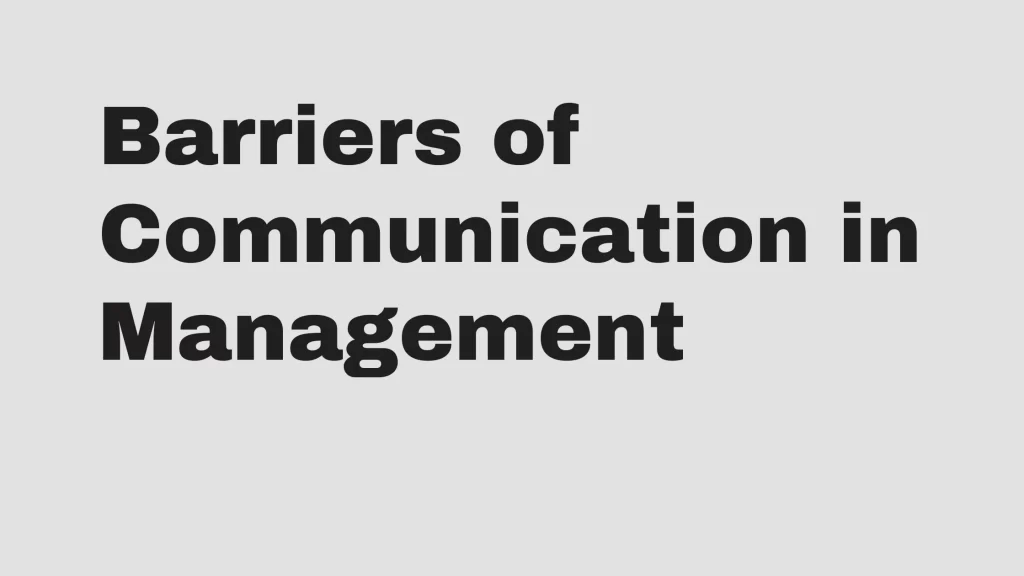Language barriers can create significant challenges in communication between individuals or groups who do not share a common language. This can be particularly problematic in multicultural workplaces, where employees may come from various linguistic backgrounds. Language barriers can also create difficulties in social settings, such as when traveling or interacting with people from different countries.
Several types of language barriers can impede effective communication. These include differences in vocabulary, grammar, pronunciation, and syntax. In addition, cultural differences can also create language barriers, as certain words or phrases may have different meanings or connotations in different cultures. For example, the word “yes” may indicate agreement in one culture, but in another, it may be seen as a polite way of saying “no.”
Contents
- 1 Understanding Language Barriers
- 2 Common Types of Language Barriers
- 3 Language Barriers in Different Contexts
- 4 Impact of Language Barriers
- 5 Overcoming Language Barriers to Communication
- 5.1 Learn Basic Phrases
- 5.2 Use Technology
- 5.3 Hire Interpreters/Translators
- 5.4 Visual Aids
- 5.5 Simple Language
- 5.6 Active Listening
- 5.7 Clarify and Repeat
- 5.8 Cultural Awareness
- 5.9 Language Courses
- 5.10 Written Communication
- 5.11 Use Non-verbal Communication
- 5.12 Establish a Common Language
- 5.13 Feedback
- 5.14 Patience
- 5.15 Engage in Cultural Exchange
- 5.16 Encourage Language Learning in Organizations
- 5.17 Hire Multilingual Staff
- 6 Conclusion
Understanding Language Barriers
Language barriers are a common challenge in communication, particularly in today’s globalized world, where people from different cultures and backgrounds often interact with each other. A language barrier refers to a situation where two or more people are unable to communicate effectively due to differences in language use, and it can act as a barrier to effective communication.
Common Types of Language Barriers
Language barriers can arise in various forms, making it difficult for people to communicate effectively. Here are some of the common types of language barriers

Dialect and Jargon
Dialects and jargon are two common language barriers that can make communication difficult. A dialect is a regional language variation, while jargon is a technical language used in specific industries or professions. When two people from different regions or industries communicate, they may struggle to understand each other due to differences in dialect or jargon.
Body Language
Body language is another type of language barrier that can hinder communication. Different cultures have different body language cues, and what may be considered appropriate in one culture may not be in another. For example, direct eye contact is considered a sign of respect in Western cultures, while in some Asian cultures, it may be seen as a sign of disrespect.
Different Languages
When two people speak different languages, it can be challenging to communicate. This language barrier is common when people from different countries or regions interact. In such cases, an interpreter may be required to facilitate communication.
Language Disabilities
Language disabilities such as hearing or speech impairments can also challenge effective communication. People with hearing impairments may require sign language interpreters, while those with speech impairments may need assistive devices such as speech synthesizers.
Language Barriers in Different Contexts
Workplace
Language barriers in the workplace can cause a lot of miscommunication and misunderstandings. When people from different places come together to work, they may speak different languages or dialects within the same language. This can lead to confusion and frustration, which can eventually lead to various kinds of conflicts.

To overcome language barriers in the workplace, companies can offer language classes to their employees. This will help employees learn a common language that they can use to communicate with each other. Additionally, companies can also hire interpreters or translators to help employees communicate with each other.
International Communication
Language barriers can also be a problem in international communication. When people from different countries communicate, they may speak different languages. This can make it difficult for the sender and the receiver to understand each other.
People can use translation software or hire interpreters to overcome language barriers in international communication. Additionally, people can also learn a common language that they can use to communicate with each other.
Overall, language barriers can cause a lot of problems in different contexts. However, people can overcome these barriers and communicate effectively with the right tools and strategies.
Impact of Language Barriers
Language barriers can significantly impact communication between individuals who speak different languages. Misunderstandings and miscommunications are common when there is a language barrier, and it can cause communication gaps, making it difficult to understand complicated concepts. When communication occurs between people speaking two different languages, language barriers can cause misunderstandings and misinterpretations, leading to ineffective communication.
A language barrier can occur in various settings, including healthcare, education, and business. In healthcare, language barriers can cause a delay in treatment, misdiagnosis, and medication errors. A systematic review found that miscommunication between medical providers and patients due to language barriers reduces the satisfaction of both medical providers and patients, the quality of healthcare delivery, and patient safety. Even when interpreters are available, some clinicians refrain from using them or using them effectively, which can exacerbate health inequity.
In education, language barriers can cause students to need help understanding and keeping up with their coursework. Teachers may need help explaining complicated concepts, and students may feel embarrassed or frustrated when they cannot communicate effectively with their peers. In business, language barriers can make communication worthless, making it challenging to develop relationships with clients or customers. It can also make communication ineffective, leading to misunderstandings and misinterpretations.
Language barriers can become barriers to effective communication, causing misunderstandings and misinterpretations. This barrier can occur in various settings, including healthcare, education, and business, and it can cause delays in treatment, misdiagnosis, medication errors, and a reduction in the satisfaction of both medical providers and patients.
Overcoming Language Barriers to Communication
Overcoming language barriers in communication is crucial in today’s globalized world. Here are some practical strategies to help navigate these challenges:
Learn Basic Phrases
If you’re communicating frequently with speakers of a particular language, learning basic phrases can show respect and facilitate essential communication.
Use Technology
Translation apps like Google Translate, Duolingo, or Babbel can be handy. Real-time translation devices are available that can be used in face-to-face conversations.
Hire Interpreters/Translators
For business meetings, conferences, or critical discussions, it’s worth hiring professional interpreters or translators.

Visual Aids
Use diagrams, pictures, and gestures. Visuals can often transcend language barriers.
Simple Language
Avoid jargon, idioms, and complex sentences. Stick to simple and direct language.
Active Listening
Paying close attention can help you grasp the general idea even if you don’t understand every word.
Clarify and Repeat
Regularly ask if the other person has understood and ask them to repeat or rephrase if you need clarification.
Cultural Awareness
Understand that language is deeply tied to culture. By understanding culture, you can often predict and navigate potential language misunderstandings.
Language Courses
Enroll in language classes or use online platforms like Rosetta Stone, Coursera, or Khan Academy.
Written Communication
Sometimes, writing things down can be more precise than speaking, especially if there’s time to translate the text.
Use Non-verbal Communication
Gestures, facial expressions, and body language can convey messages. But be careful, as some gestures might have different meanings in different cultures.
Establish a Common Language
If two parties are non-native speakers of a third language, sometimes it’s easier to communicate in that third language.
Feedback
Encourage feedback to ensure that messages are correctly understood.
Patience
Remember that understanding oneself can take time when there’s a language barrier. Always be patient and empathetic.
Engage in Cultural Exchange
Engaging in cultural exchanges, such as spending time abroad or hosting someone from another country, can provide real-world practice and understanding.
Encourage Language Learning in Organizations
Companies can offer language courses to employees, aiding in breaking down language barriers within international teams.
Hire Multilingual Staff
For businesses, having multilingual staff can be a significant asset, especially in customer service or international relations roles.
Remember, the key to overcoming language barriers combines preparation, patience, and a willingness to learn. Always be open-minded and understanding, recognizing that both parties navigate the challenge together.
Conclusion
Language barriers can significantly impact communication, causing misunderstandings, frustration, and missed opportunities for connection. However, by understanding the different language barriers and implementing effective strategies to overcome them, individuals and organizations can enhance their ability to communicate across languages.
One fundamental way to overcome language barriers is through education and training. By investing in language learning programs or hiring interpreters or translators, individuals can bridge the gap between languages and facilitate more precise communication. Visual aids such as images or diagrams can help convey information when words fail.
Boko Ducky has over 10 years of experience in helping individuals and organizations improve their communication skills.



